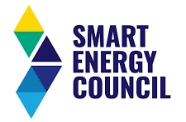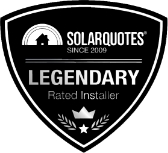 You’re looking to buy solar, but your best section of the roof is close to flat. The bloke down the road has mounted hideous tilt frames on his roof, and you are wondering if you really need to do this to your home, your castle. In this post, I’ll first explain the theoretical reason behind installing tilt frames. Next, I’ll explain the reality and why we often suggest not installing solar panels with tilt racking. Finally, I’ll give a few examples where we may recommend tilting your panels towards the north.
You’re looking to buy solar, but your best section of the roof is close to flat. The bloke down the road has mounted hideous tilt frames on his roof, and you are wondering if you really need to do this to your home, your castle. In this post, I’ll first explain the theoretical reason behind installing tilt frames. Next, I’ll explain the reality and why we often suggest not installing solar panels with tilt racking. Finally, I’ll give a few examples where we may recommend tilting your panels towards the north.
The theory of installing solar tilt frames
The best direction to face your panels in Australia is north. The aim is to have the panels at 90 degrees to the sun’s rays. Unfortunately, we’re dealing with a moving target.
Because the midday sun gets higher in the sky in Summer, and lower in Winter, the common rule is to split the difference and point the panels towards the equinox. This image shows that in Brisbane, that works out to be 27 degrees.
It’s no coincidence that 27 degrees also happens to be the latitude of Brisbane. The diagram below shows how tilting the panel at 27 degrees when your latitude is 27 degrees will bring the panels back to facing the midday sun at the equinox. It would be equivalent to laying solar panels flat at the equator.
But it turns out this rule of thumb is not entirely correct. A peer review journal published by the University of Queensland in 2013 found:
The theoretical optimum configuration is approximately 26 degrees north for tilt angles with PV panels facing true north for orientation. Considering the latitude for Brisbane (27.47 deg). this result is very close to the rule of thumb … a tilt angle approximatley equal to the latitude angle.
Energy conservation and management 74 (2013) 102 -108
Earth-shattering. We’ve been getting it so wrong all this time! But seriously, how much does it matter? Should we be installing tilt frames to get panels as close as practical to 26 degrees?
The reality of installing solar tilt frames
Let’s get back into the real world. How much will tilt frames increase your solar generation? Below is an example of a job we recently installed in Brisbane. We presented the client with 2 options, one using tilt frames and one without.
Pat from the CEC read my post and pointed out that the below scenarios are worked out for Brisbane’s latitude. If you are significantly south of Brisbane, the case for tilt frames will look better.
Option 1: Tilt Frames
- 7.2kW QCell panels, Fronius 8.2kW Symo inverter, tilted north.
- Cost: $8700
- Payback period 4.1 years.
(Tilt Frames cost about $50 per panel)
The front (northern) section of the roof is chopped up so much that we would need to use optimisers in order to make it work. This would not only increase the cost of both labour and materials, it would unnecessarily detract from the street appeal of the house.
The large back roof is pitched at 10 degrees towards the south. South is obviously not the ideal orientation to install solar, so enter the tilt frame conversation.
The design is for 24 x 300W Qcell panels or a 7.2kW array tilted back towards the north.
Tilting the panels at 26 degrees towards the north would mean the front row would shade the back row early morning and late afternoon. Instead, we’ll use 30-degree tilt frames to turn a 10-degree south array into a 20-degree north array. The front row will still throw a shadow, especially around Winter Solstice (June 22nd) in the morning and afternoon. This limits the usable roof space and limits us to install 2 rows rather than 3 rows.
Because of the shadow thown from the Northern row, we are limited to installing 2 rows of panels instead of 3 rows.
The graph below shows the expected output for the above design. The average daily output in Summer compared to Winter is relatively consistent, with an average of 22kW in June and 32kW in January.
- The system would produce 10381kWh / year
- Calculated minimum savings of $1400/ year (Brisbane)
- Calculated maximum savings of $2800 / year (Brisbane)
- Expected $2100 per year saving.
- The payback period is 4.1 years.
Option 2: No Tilt Frames
- 9.9kW QCell panels, Fronius 10kW Symo inverter
- Cost: $9200
- The payback period is 3.7 years.
The second option, laying the panels flat, has many advantages. Instead of investing money and roof space in tilt frames we invested in more panels and a larger inverter.
Because we didn’t need to leave the gap between the front and back row (as we did in the tilt frame option), we were able to fit an additional 9 panels on the roof, and still leave a walkway between the panels for maintenance.
This job was a straightforward install on a tin roof, so we were able to quote it as a 1-day install, cutting the costs down significantly. More complex jobs of the same size can take 2 days to install which would increase this cost significantly.
This option generates almost the same winter performance as the first option (20kWh versus 22kW in June), but a much better summer performance (46kW versus 32kW in January.)
Perfect for summer air-con consumption!
- The system would produce 12636kWh / year
- Calculated minimum savings of $1700/ year (Brisbane)
- Calculated maximum savings of $3400 / year (Brisbane)
- Expected $2500 per year saving.
- 3.7-year payback period.
Skip the tilt frames?
The above comparison shows that it is often more financially viable to skip tilt frames and use the money and roof space you saved to install more panels. Unless you really love the technology, tilt frames can be a pretty ugly set-up anyway. Still, there are some examples where tilt frames are an option worth considering.
A good reason to use tilt frames
Water ingress

- Sunpower installation manual –“Modules may be mounted at any angle, from horizontal to vertical. To reduce soiling, modules should be mounted at a minimum of 10 degrees.”
- Canadian Solar advised me we can mount their panels flat. Their installation manual only states “Modules with sufficient tilt (at least 15°), generally do not require cleaning (rain will have a self-cleaning effect).”
- Trina installation manual: “Trina-Modules that are mounted flat (0° tilt angle) should be cleaned more often, as they will not ”self-clean” as effectively as modules mounted at a 10° tilt or greater.”
- Longi installation manual: “LONGi suggest that the tilt angle for the module installation shall not be less than 10° so that the dust on the module surface can be flushed away easily by rainfall and times of cleaning module can be reduced accordingly. And it also facilitates the drainage of collected water on the glass due to long time water collection which may further affect module appearance and performance.
- REC– no mention of a minimum tilt angle found.
- Seraphim installation manual only states: “It is recommended to install the PV modules with a minimum angle of 10 degrees to make the dust easily to be washed off.”
- JA Solar installation manual: “JA Solar recommends installing modules with a tilt angle of at least 10 degrees, making it easier for dust to be washed off by rain.”
- QCells General release document permits a minimum of 3 degrees outside of the tropics. If we were to install panels in the tropics or at less than 3 degrees, we can ask QCells for a specific release letter. QCells explain that the issue with laying panels flat is, in theory, to reduce the change of PID, because a low tilt will cause water to accumulate on the front of the panel, effectively increasing humidity. However, Qcells they are relaxing their installation requirements as they have had zero PID fails since 2012
So generally speaking, panel manufacturers allow panels to be laid flat. If you know of another panel with a particular tilt requirement, please leave a comment below with a link, and I’ll add it to the list.
Self Cleaning
As many manufacturers have explained above, one of the main purposes of tilting panels is for self-cleaning. The Clean Energy Council explains:
A minimum tilt of 10° is recommended to take advantage of self-cleaning during rain events. Where modules are installed at a tilt angle less than 10°, the customer shall be advised about the need for more frequent cleaning of the modules, and this should be included in the recommended maintenance schedule.
The image above is of panels installed at my warehouse on a rainy day. The pitch of the roof is about 3 degrees. As you can see from the photo, rainwater pools at the bottom of the panel. My office is based near the busy Gateway Motorway and right behind us is a commercial cardboard mulcher, so it is a fairly dirty area. How do the panels fair for self-cleaning? Surprisingly, when I compare the dirt buildup on these flat panels to the buildup on my tilted panels (seen in the distance), there is not a lot of difference. I think the CEC and manufacturers are being a little over-cautious.
Self-cleaning in my experience is usually only a minor issue. If you live in a dry and dusty country town, tilting the panels will help them self-clean. Otherwise, have them cleaned more regularly. This might mean every two or three years, depending on where you live.
Reverse tilting
Occasionally we might come across a roof pitched at 20 degrees south where we cannot install 2 rows flat. The customer has a reasonable winter load and wants to maximise his performance at any cost. In cases like this, we would crunch the numbers for tilting.
It’s worth noting that not all rail systems are engineered to be used for reverse tilting. We use Radiant rail, which can be used for reverse tilting on tin roofs, and believe it or not, on tile homes.
Where installing more panels is not an option
In some cases, you may be prevented from installing more panels. For example:
- Other sections of your roof are shaded by trees.
- Your roof does not allow for more than 1 row of panels anyway.
- You can reach your allowed limit of panel capacity with tilt frames. (In the Energex area, that is 6.6kw of panels per phase export and another 6.6kW per phase non-export).
Conclusion
There is a good theoretical reason behind tilting panels at roughly the same angle as your latitude. The downside is that panels mounted on tilt frames throw a shadow that will reduce the usable solar roof space. If instead of installing tilt frames, we install more panels, you can often achieve a better financial result. Most manufacturers allow panels to be installed flat and only recommend tilt frames for self-cleaning purposes. However in my experience, self-cleaning is usually a minor issue that can be solved by more regular manual cleaning. The cases where you may consider tilt frames might be to increase winter production, or where installing more panels is not an option.
Leave a comment below!
Mark Cavanagh














6 Responses
Thank you for this very useful and informative article. It really helped me a lot.
Thank you for a great article which really helps with the decsion not use tilt frames.
Hi Harvinder. 4 degrees tilt to the south will perform very well in the summer, less so in the winter. So it really depends on your seasonal power consumption habits.
Hi mark I have roof tilted to south 4 degree. Is it worth installing penels 4 degree to south Thanks
Hi Brett, No in Australia you can’t put more than 6.6kW or panels on your inverter if you got the STC point of sale discount or “rebate”. I’d probably just use ENphase microinverters to put a small system up if your utility allows it.
Hi Mark, I’m in Adelaide. I have a 5kw ABB inverter with 6.6kw of panels on two strings on a 5 degree roof facing slightly west. We have a stone house with evaporative cooling in Summer but have high load in winter for warming. I’ve read some of your articles and have the room for another 7 panels. My question is there a way to add these extra ones for the winter without overloading the inverter? Ie switch them off in Summer?